Today we start a series of travelogue-style episodes to walk through the second of my two Japan Winter Wildlife Tours for 2019, as we kick off with the Snow Monkeys, then move on to the Red-Crowned Cranes in Hokkaido.
A Mother’s Arms
After driving over to the Nagano Prefecture from Tokyo, we headed into the Monkey Park on the first day, and the relatively small amount of snow that we saw on the way in was a good indication that this was going to be a somewhat challenging visit, but that to me, is part of the fun of running these tours. I get to see these locations in all conditions, and I will always come away with something to make these visits worthwhile, both for myself and more importantly, for my guests.
I shot less than usual, but as with this following image, there are still little gems to shoot even if the valley isn’t filled with pristine snow. This mother was sitting on the side of the hot spring pool that the monkeys often bathe in, picking up the grain that the wardens through down for the monkeys, but of course it’s the interaction with the young monkey that makes this shot worth sharing.
Even though the mother is preoccupied with the grain, she shows affection for the youngster in her arms with the way her right arm is wrapped around its shoulder, and closed eyes in an animal to me are always a sign of security and contentment.
To ensure that I got a sharp shot with my 100-400mm lens, I increased my ISO to 3200 for a 1/500 of a second exposure at f/10. If I’m shooting the monkeys running around on the valley walls, I generally try to get at least
Note too that I have drawn a mask over the babies face and increased the Shadows slider a little in Capture One Pro, just to ensure that we can see the baby down in the shadows.
A Ride Home
All of the shots that I’ll share from this visit to the snow monkeys are from the middle of the three days. I really enjoy standing in a spot where the monkeys walk down the mountain through the snow, and I did that a lot on this trip too, but because there hadn’t been any fresh snow,
After lunch on the second day though, as I walked back down to the hot spring pool, there were a few monkeys walking down the mountain in some still relatively clean snow, as you can see in this photograph. You will also be able to see how wet the snow is, as this patch resists the overwhelming temptation to become water.
For this
This framing is also out of the camera. I clipped the back foot of the snow monkey, but I’m not too concerned about that. I like to frame my subjects as tight as possible, so I was pretty happy with this.
I increased the Shadows slider to brighten up the monkeys a little, and once again, I drew a mask over the baby’s face, and just increased the Shadows slider a little, to ensure that we can see it. Their faces tend to go a little dark, even in situations like this, especially as I’m exposing my images to ensure that the snow is white, and yet not over-exposed. That can make the monkeys a little bit dark overall.
Standing Ground
This final image from the Snow Monkeys is from just a few minutes after the previous image. There was a procession of monkeys that came down the hill in a relatively short space of time, and it caused a small crowd to form, which probably started to intimidate the monkeys a little. In retaliation, this one climbed up on a log sticking out of the snow and shook the log a couple of times, which is a sign of aggression, aimed towards the crowd. That’s about as far as it went
The monkeys are, after all, very much accustomed to being close to the hoards of humans that visit the park each day, and in perspective, tolerate us really well, considering that they are still essentially wild animals.
My settings for this photograph were the same as the previous one. I shoot in manual mode so as to not have to worry about my exposure too much as I shoot, so once it’s set, I can just concentrate on getting my shots until the light conditions change.
In
Hokkaido
After our three days with the Snow Monkeys, we took a steady drive back to Tokyo, then got an early flight up to Hokkaido on the fourth morning of the tour. Despite it being warmer than usual, I actually came away from the second trip this year with a huge number of images that I am really happy with. That’s a great problem to have, but it also means that as I prepare for this episode, I’m once again struggling to whittle down a selection of images to talk about. I have just gone through the images from the first four days in Hokkaido, and have 39 images that I’d love to share with you, and that obviously isn’t going to work. We’ll work through a few images anyway, and I’ll decide which one’s get chopped as we go along.
Room To Spread Wings
As I’ve mentioned recently, they have reduced the amount of corn that they are throwing down for the cranes, as their numbers are now increasing quite well. They have also stopped throwing out live fish at 2 pm each day at the Crane Center, and this means that the
That might not sound like a good thing, but there have been so many cranes for the last few years, that when they actually do something, it was very difficult to isolate the bird or pair that was performing for a nice photograph. That is definitely getting easier to do now though, because of the lower number of birds, although it’s still nice when a bird lands, like this, in a frame with no other birds in the foreground or background.
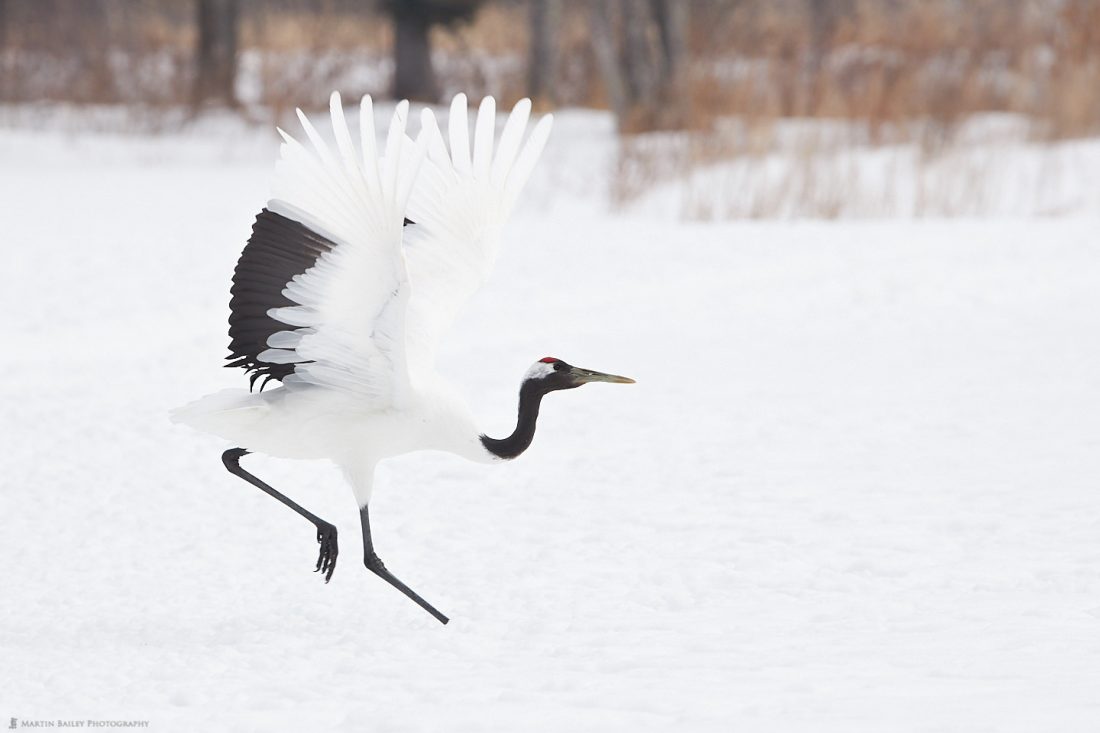
It’s also nice when we have a full covering of snow like this, and the overcast sky on this visit meant that there wasn’t too much contrast in the snow, which is great. I much prefer to see these beautiful birds in photographs shot in overcast conditions, as it’s easier to appreciate the detail in their feathers. I also really like it when the white of the bird is very similar to the white background. That’s probably one of the most appealing things about the photographs that we do on this trip to me.
So as to freeze most of the motion in these birds as they move around or fly, I had set my shutter speed to 1/1600 of a second at ISO 1000, and my aperture was at f/11, to ensure that I had enough depth of field to get two birds sharp when they are in the frame together, although that’s obviously not important for this photograph.
Ural Owl and Nuthatch
In the afternoon, we headed over to an owl’s nest that I know of, and although there was a pair on the nest during our first visit, there was only one owl this time. As I often say though, when we lose something, we often gain something else, and in this photograph, we have a surprise visit by a beautiful little Eurasian Nuthatch, posing perfectly for us on the side of the tree, and probably making enough sound scratching at the bark as he flitted around, to cause the owl to look over in his direction.
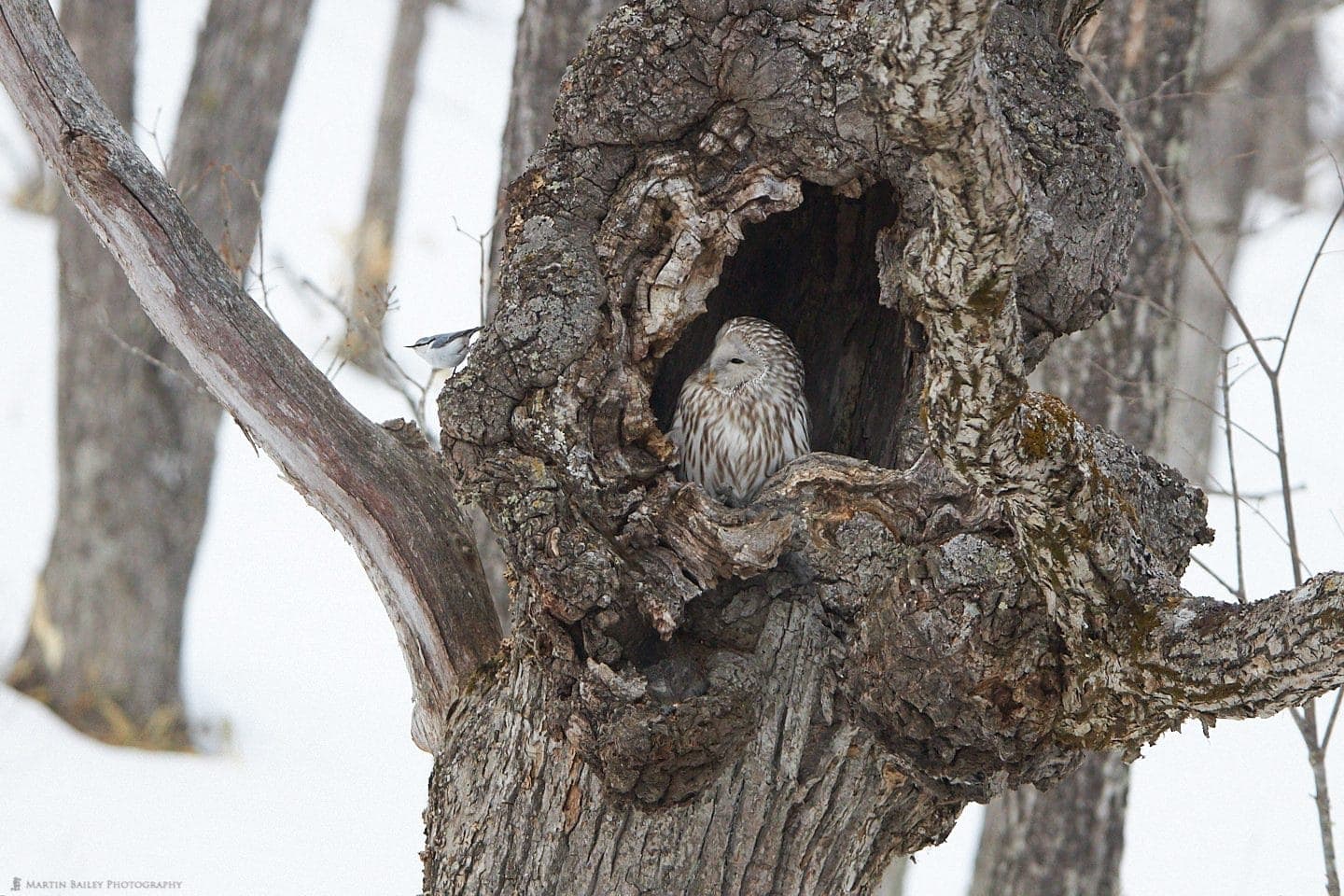
Although I had fitted a 2X Extender to my 200-400mm lens as well as engaging the built-in Extender, I’d actually not zoomed in fully for this, so that we could see these animals in their environment, so my focal length for this shot was 811 mm. To get my exposure of just 1/160 of a second I had to increase my ISO to 3200, at f/11. Of course, with both Extenders engaged, f/11 was the widest aperture available to me. The base f/4 aperture of the lens becomes f/5.6 when you engage the internal Extender, then we have to add two more stops, so f/8 then f/11 for the 2X Extender.
Dancing Cranes Triptych
I’m going to talk about the next three images as a set, because this is how I’m considering them, like a triptych. All three images were shot within 15 seconds of each other, as a pair of cranes danced at our final location for this day. We were here to do some panning shots with the cranes as the light dropped, but I couldn’t resist changing my settings to a faster shutter speed to try and freeze this movement a little.
Again, this is one of those situations where the birds are hardly distinguishable from the background, except for the parts of them that are black, or their red crowns. It was great that neither of these birds was
Six Cranes Take Flight
Unfortunately, for this next image, it had started to become so dark that my original image was around a stop under the right side of the histogram, so although I had my ISO set to 6400, has a little bit more visible grain in it than the previous images. Also, although I generally like to see sharper heads in my panning shots, for this image, I’m not letting that prevent me from really liking this. I love the form of the blurred wings of these six cranes as they run across the snow and start to take flight.
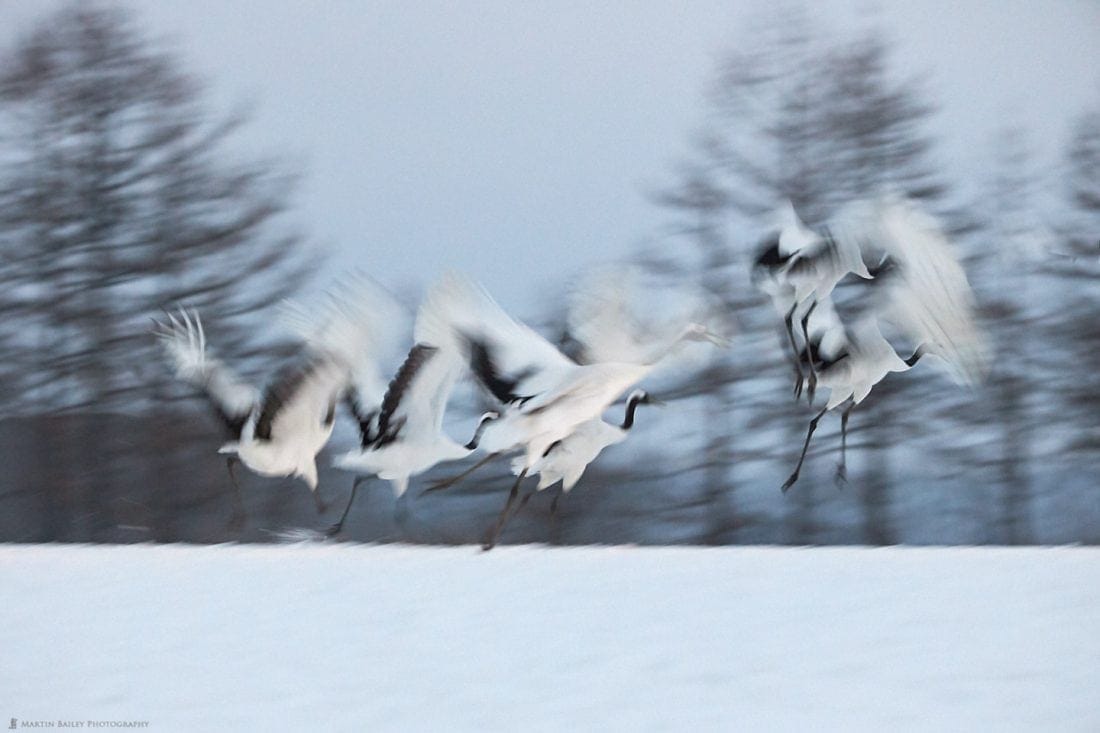
I also really like the bit of snow kicked up by the last few cranes, adding a nice additional element of interest. I actually deliberated as to whether or not I should do this, but I removed half a crane that was sticking into the shot from the left edge. I didn’t mind that it was cut off, because it kind of indicated that there were more birds to come, but it was slightly annoying that it was cut off, so I decided to remove it. My settings for this were a 1/30 of a second shutter speed with an aperture of f/5.6 and an ISO of 6400. I should have left my ISO up at 8000 or higher, but this was one of those times when the light was fading quicker than I noticed, so it kind of got away from me a little.
Otowa Bridge Bedlam
The following morning we visited the Otowa Bridge as usual, but despite leaving the hotel at 4 am the bridge was already packed when we arrived. We set up and waited to see if the hoar frost formed, but it was a little too warm for it to get really nice. We did have places to shoot from, but the shots weren’t great. To be completely honest, the bridge is becoming unworkable on this second tour, and although we’ll visit next year, it’s possible that we won’t even go early. On the following morning, before we left this area, we had a little bit of extra time in bed and didn’t try to get a place, opting rather to just shoot through the shoulders of the people that were already there.
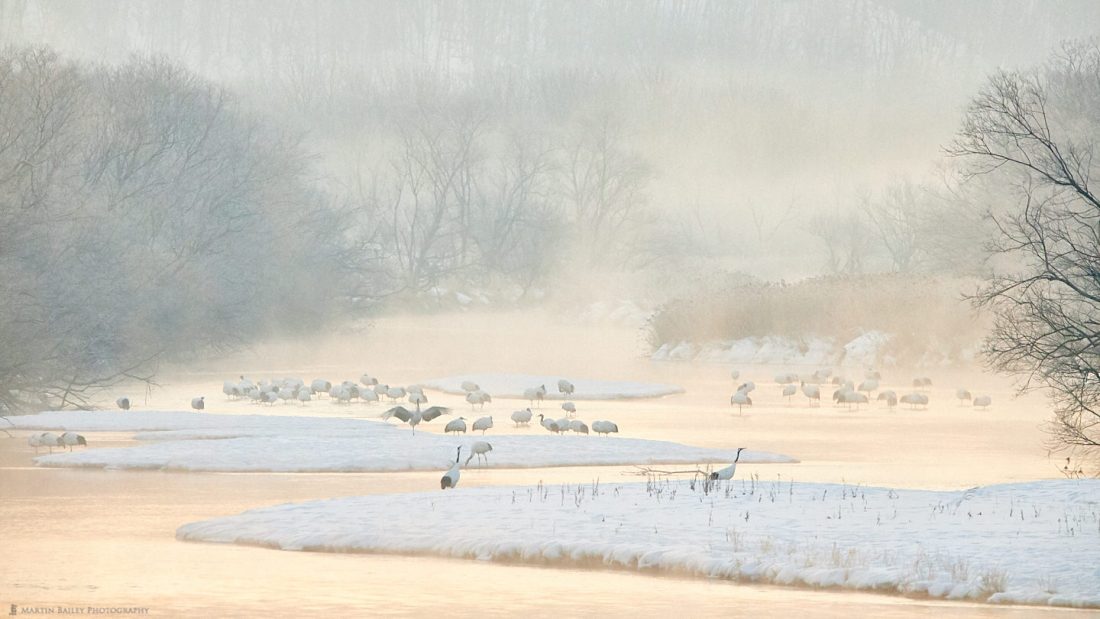
This worked, and I’m relatively happy with this image, as the cranes started to rise, with a few walking around and one of them with his wings spread. I’m pleased that we were able to get some shots like this, but it’s getting really difficult. Thankfully the other parts of this tour are still great though. My settings for this were ISO 6400 for a 1/500 of a second at f/9. I was using my 200-400mm lens with the built-in Extender engaged for a focal length of 560 mm.
Whooper Swan Fly-By
After the cranes, we headed over to Lake Kussharo where we photograph the Whooper Swans for two days. We made our customary stop at Lake Mashuu on the way, and stopped at a corner of Lake Kussharo for an hour before lunch, then having checked in and got our rooms sorted at the hotel, we went back to the lake for our panning session to end the day. Before the sun dropped behind the mountains though, we were treated with a fly-by at a good height, allowing me to shoot this next photograph.
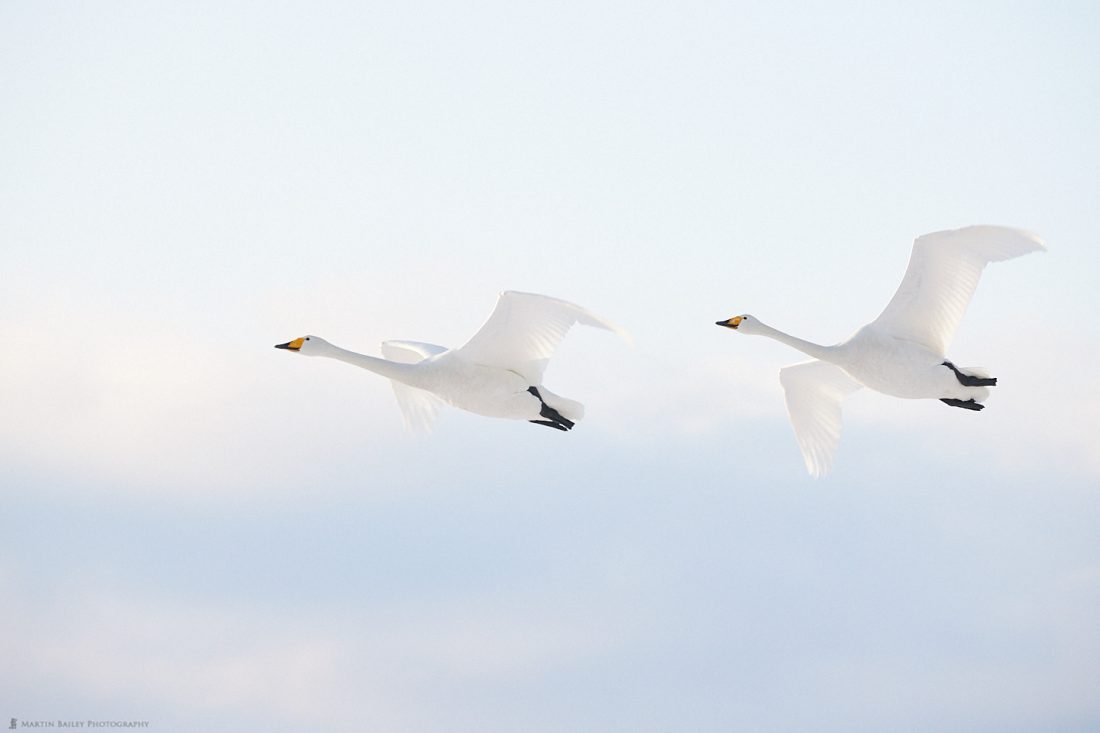
I love the softly out of focus distant clouds in the background, and the swans here are beautifully sharp and uncommonly clean. They are often quite dirty on their undersides because of the algae on the bottom of the lake that rubs against them, but these pair are really quite clean, which makes all the difference. I also really like how the back one, of the two birds, is banking a little, almost as though he’s just come out of a corner. To freeze the action like this, I’d set my shutter speed to 1/1600 of a second at ISO 1600, with an aperture of f/11. I was zoomed in to 400mm with my EF 100-400mm Mark II lens.
Homeward Bound
We’ll finish today with a panning shot as we slowed down our shutter speeds, but unlike my usual swan panning shots, again, we were lucky enough to have another fly-by, and this time I left my camera in my panning settings, so it’s made a very ethereal image, and again, one that I believe has enough artistic merit that I’m not going to throw it out just because the swans’ heads aren’t sharp.
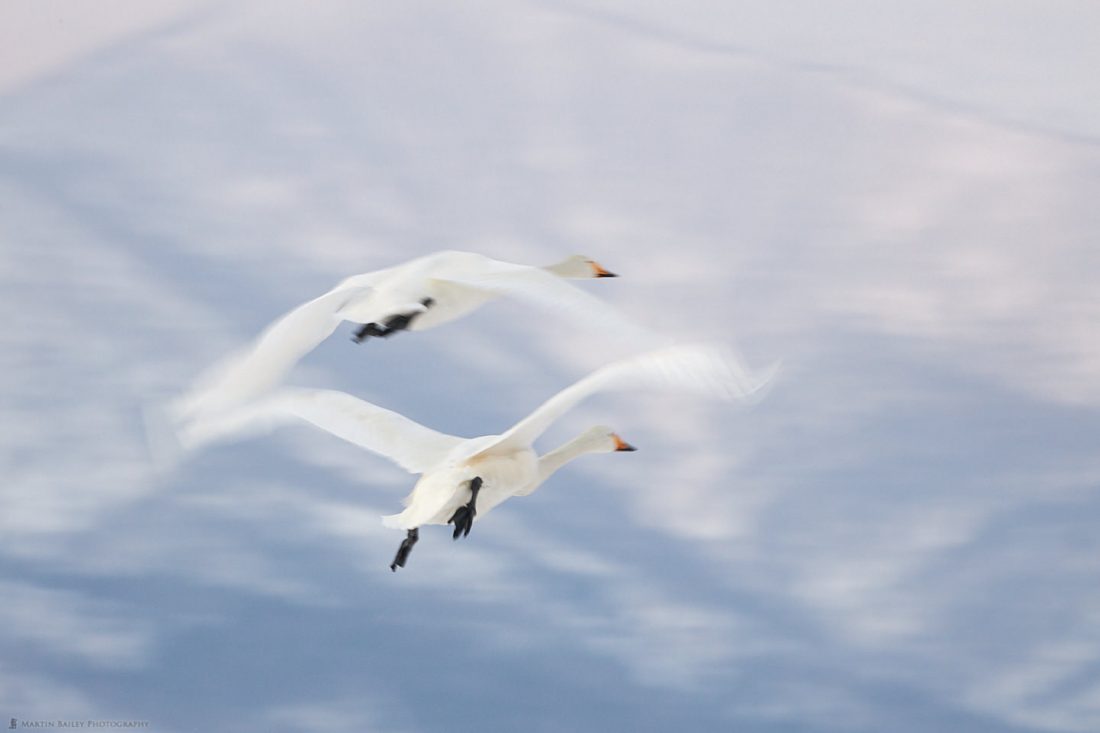
This actually reminds me of a photo that one of the participants shot on my very first tour to this location back in 2008, where the head wasn’t sharp, but the image blew me away, so I’m really pleased to have been able to get this image. My settings were 1/50 of a second at f/16, with an ISO of 640. It was really just luck that I had such a deep depth of field because of my panning settings, but it has enable me to capture quite a lot of definition in the mountain in the background as well, which I really like.
OK, so we’ll wrap it up there for this first episode. We’re actually doing pretty well, already into the swans, so I’ll try to get our final selection down to ten or maybe twelve images so that we can finish this series next week and move on to some other topics that I have lined up for you.
Japan Winter Wildlife Tours 2020
Note that we do still have some places open on the 2020 Japan Winter Wildlife Tours, so if you might be interested, please check that out here.

Show Notes
See details of the 2020 Japan Winter Wildlife Tours here: https://mbp.ac/ww2020
Details of all available Tours & Workshops are here: https://mbp.ac/workshops
Audio
Subscribe in iTunes to get Podcasts delivered automatically to your computer.
Download this Podcast as an MP3 with Chapters.
Visit this page for help on how to view the images in MP3 files.

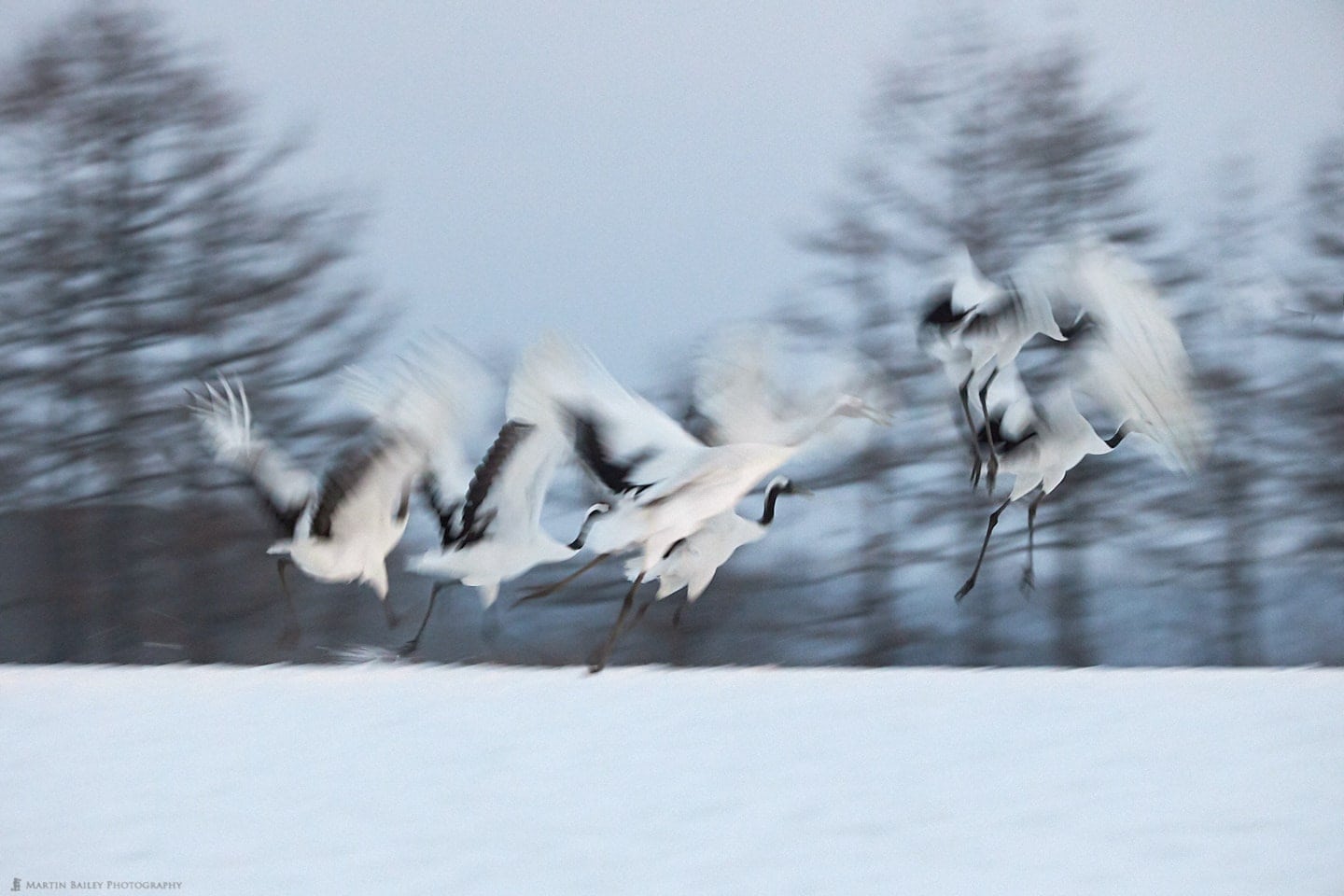
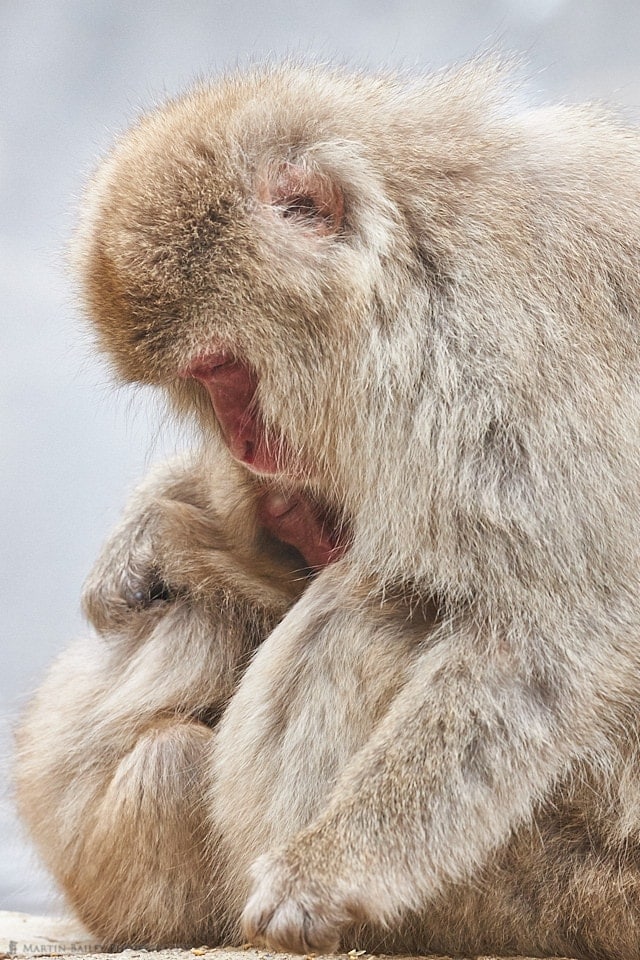
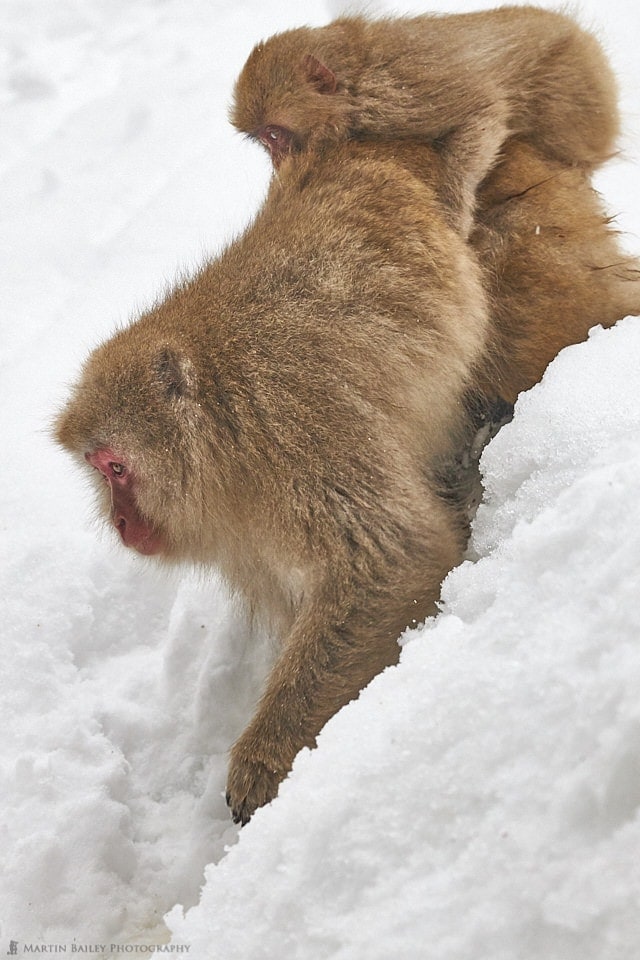
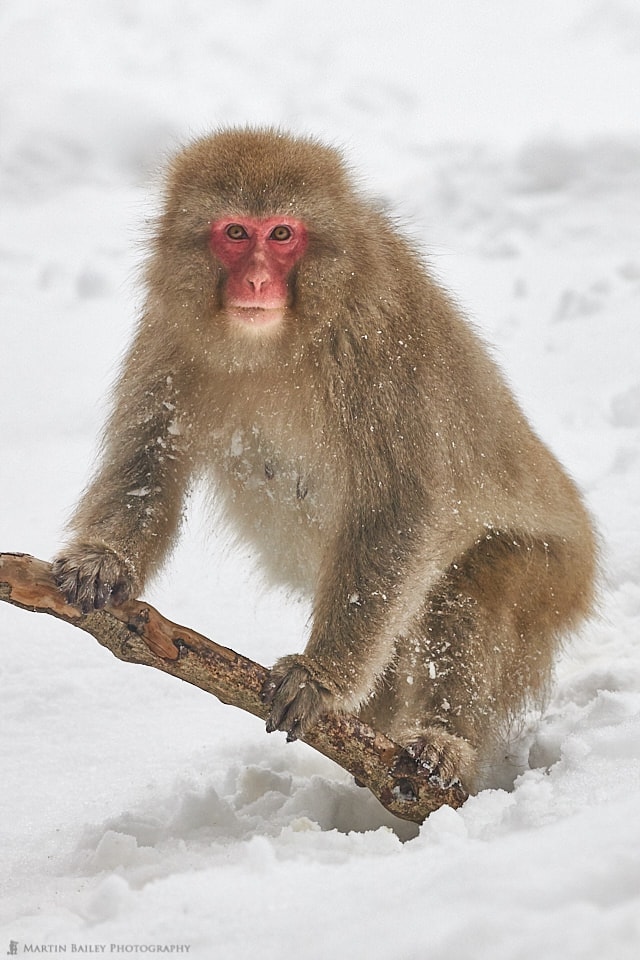
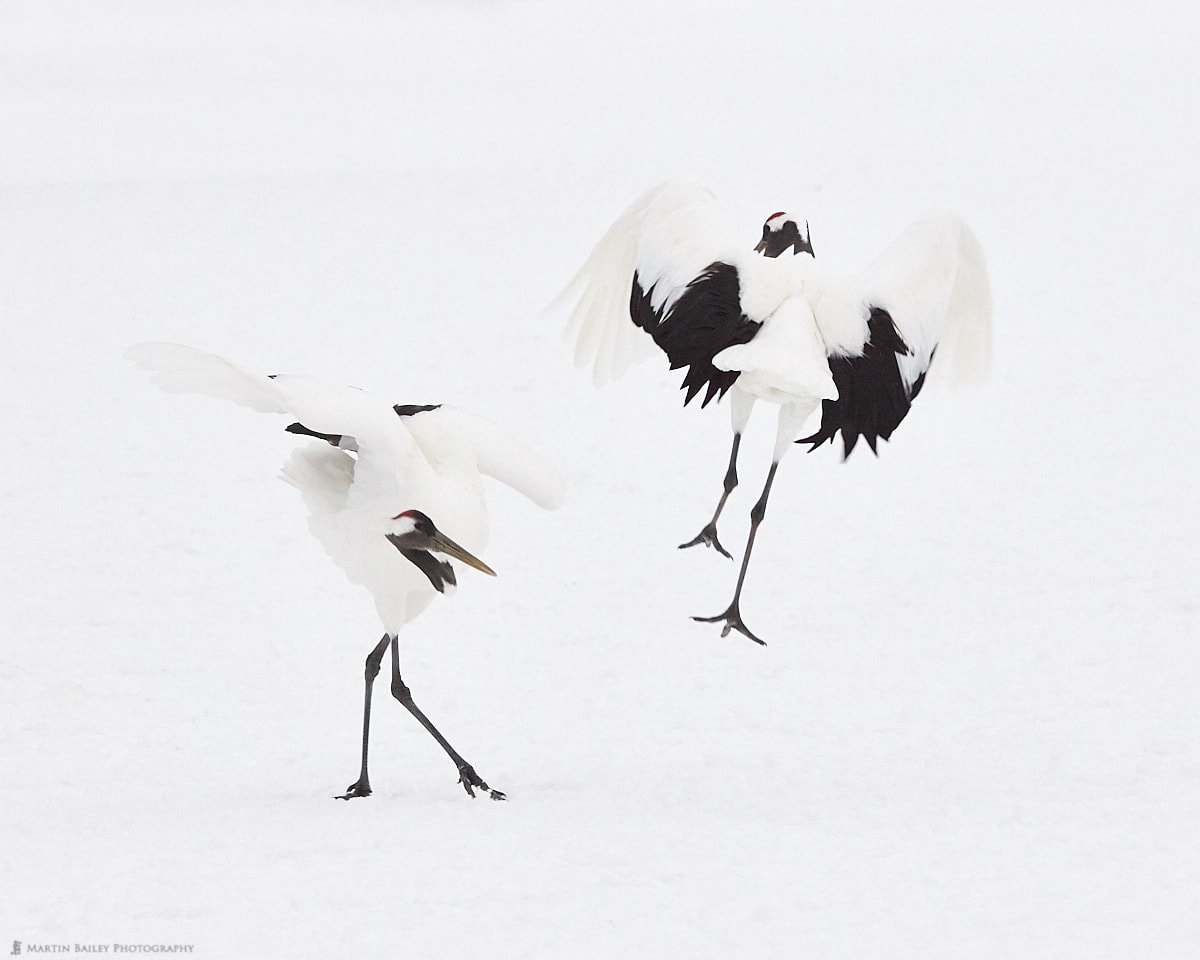
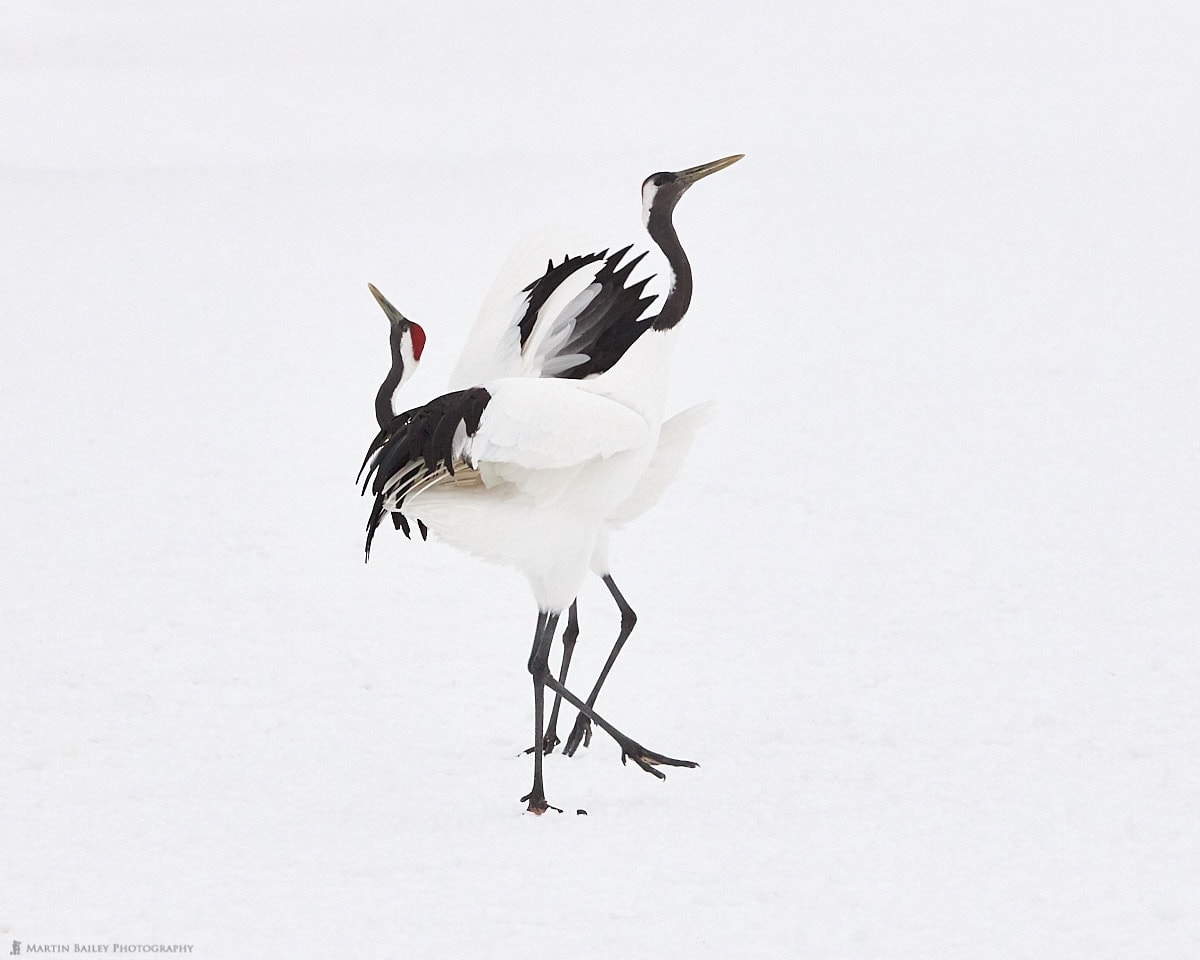
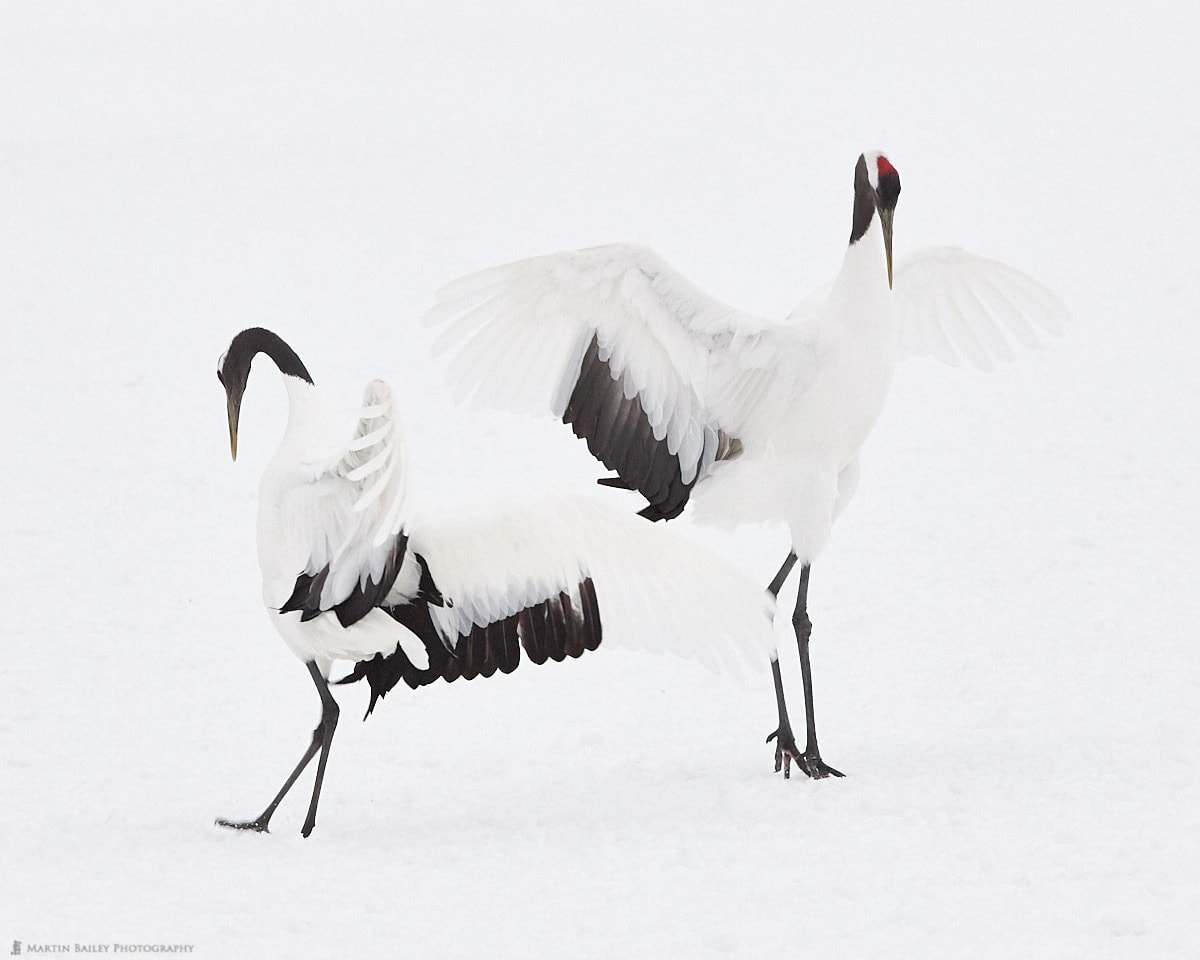

Thanks Martin for the look back at what was a fantastic trip for me. I appreciate you detailing your camera settings here so that I can compare to the shots that I made at the same locations. Again, GREAT trip. Looking forward to the final installment which I assume will include some eagles on sea ice.